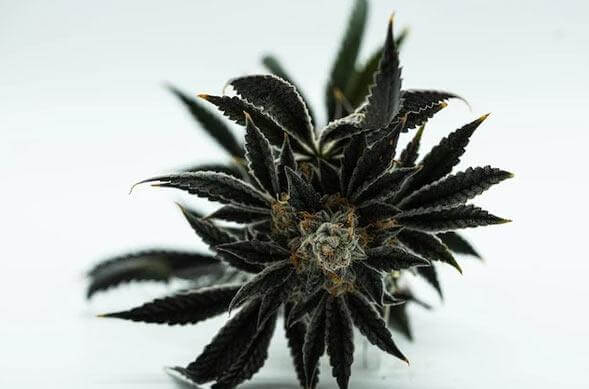Theoretically, you can grow any strain of cannabis indoors. But, the characteristics of some strains lend themselves to the indoor environment more so than others. Indoor strains are usually short, fast-growing, and high producing cultivars. They typically have predictable stretch, strong genetics, and resistance to pests and disease commonly found indoors.
While every indoor grower will have a strong opinion on what strains are the best for indoor cultivation, always do your own research. Even if you are using an all-in-one grow tent, your grow room, and personal preferences are important considerations.
As you browse the hundreds of options at your preferred seed bank, what characteristics make for the best indoor strains? So many things influence the decision, including:
- Personal experience growing indoors
- The size of the operation
- The placement and intensity of your LED grow lights,
- How much you balance quality against yield
Quick Highlights of the Best Indoor Strains
Too long; didn't read? Here are the highlights of specific strains many growers report are the best for indoor growing — and why:
- Best for Vertically Challenged Spaces: Papaya and Aurora Indica
- Best for Indoor Yield: Big Bud and Papaya
- Best for Time to Flower: Euphoria, Green Crack, or most Autoflowering options
- Best for Beginners: Blue Dream, Green Crack and Northern Lights
Best Indoor Strains: 4 Important Considerations
Through your research, what important strain features should you take into consideration? The following are some of the key areas to pay attention to as you dig around on seed bank databases and breeder strain profiles.
Stretch
Flower stretch is the growth that happens immediately after switching into the flowering stage. As the plant develops buds, it also reaches towards the light. Stretch matters for indoor growing because of space considerations. Tall stretching plants may push the upper limits of your grow tent, and leave you with no room to raise the light fixture. Without enough space between canopy and lights, you risk damaging the flowers. Different varieties have different stretch characteristics. For example,
Most seed banks include information on expected height (indoor and outdoor) for their cultivars. Seed Finder reports that Afghan Kush has upwards of 60 cm of stretch, as only one interesting example. If you are unfamiliar with the strain, it's worth finding the flower stretch, and adjusting the grow space based on these expectations.
Sativas, a strain that evolved in hot tropical environments, have tall and expansive genetics. Indicas, on the other hand, grow small and tight. Hybrids, of course, can land anywhere along the stretch spectrum. Many growers with small spaces prefer indica or indica-dominant hybrids.
Yield Versus Strain Characteristics
Even if you plan on using SCROG, or another LST to improve yields, each variety varies in terms of output. BigBud and Papaya are reportedly massive indoor producers.
Some growers choose indoor cultivars based on medicinal properties, potency, bud characteristics, or aromatic profile. Yield is always important to some extent, but there may be other reasons to choose a strain.
Time to Harvest
Short on time? Flower timing has as much to do with cultivation as it does with genetics. There are two distinct types of seeds designed for rapid harvests: auto-flowering and some photoperiod strains. Autoflowering varieties don't produce as much bud or as potently as a photoperiod option— but they do bud much more quickly.
Photoperiod, which are plants that require a change in light schedule to trigger a shift into flower, may also be bred for rapid development. Most quick-flower indoor cultivars bud around six to seven weeks, although there are a few reports of strains ripening around 45 days, like Euphoria and Green Crack.
Difficulty Rating
Are you a beginner? You'll want to steer clear from some varieties because they require a bit more time, investment, and finesse during their lifecycle. Most seed banks discuss difficulty rating in the strain-notes, which typically take into consideration time to harvest, mold and pest resistance, overall robustness, and yield. A few variants make frequent appearances on the best strain for beginners lists, including Blue Dream, Green Crack, and Northern Lights.
A Note on Seed Bank Information
No matter where you shop for seeds, remember to read strain reviews with a grain of salt. Seed banks are in the business of selling seeds, and therefore can exaggerate the yield, time to harvest, and difficulty rating.
Compare notes on strain between reputable databases like Seedfinder.eu, cultivator forums, and other growers. Pay particular attention to reviews from your specific breeder, as this can drastically change the strain characteristics - from one White Widow to the next. Shopping with regional sellers is usually your best bet.
Ultimately, The Best Strain to Grow Indoors is Left Up to the Grower
While there are hundreds of seed banks and blogs compiling lists of the best strains for indoor growing, it's ultimately up to the grower. With the right grow room setup, and experience, you can grow just about every strain successfully indoors.






3 comments
Kristopher
Excellent article. I’m facing a few of these issues
as well.. Maillot Borussia Dortmund
Dale
I’ve been surfing online more than three hours today, yet I
never found any interesting article like yours. It is pretty worth enough for me.
In my opinion, if all site owners and bloggers made good content as
you did, the web will be a lot more useful than ever before.
koszulki piłkarskie z własnym nadrukiem
Eleanore
Woah! I’m really enjoying the template/theme of this blog.
It’s simple, yet effective. A lot of times it’s difficult to get that “perfect balance” between usability and appearance.
I must say that you’ve done a amazing job with this.
Additionally, the blog loads super quick for me on Safari.
Excellent Blog! Achetez dès maintenant le nouveau Maillot Monaco 2020/2021